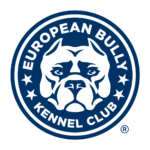A powerful and muscular French breed, the Dogue de Bordeaux is a molossoid (mastiff-type dog), “dogue” meaning Mastiff in French. A massive head and stocky body are trademarks of the breed. The world became aware of the Dogue de Bordeaux when he appeared as drooling, messy “Hooch” in the 1989 Tom Hanks’ film,Turner and Hooch. The breed’s short, fine coat is fawn-colored, ranging from a dark red to a light fawn.
The dogue de Bordeaux is one of the most ancient French breeds, probably a descendant of the Alans and, in particular, the alan vautre of which Gaston Phebus (or Febus), Count of Foix, wrote in the 14th century, in his Livre de Chasse that “he holds his bite stronger than three sighthounds”. The word “dogue” appeared at the end of the 14th century.
In the middle of the 19th century these ancient dogues were hardly
renowned outside the region of Aquitaine. They were used for hunting large game such as boar, for fighting (often codified), for the guarding of houses and cattle and in the service of butchers. In 1863 the first French dog show took place in Paris in the Jardin d’Acclimatation. The Dogues de Bordeaux were entered under their present name. There have been different types : The Toulouse type, the Paris type and the Bordeaux type, which is the origin of today’s Dogue.
The breed, which had suffered greatly during the two world wars, to the point of being threat ened with extinction after the second world war, got off to a fresh start in the 1960’s.
